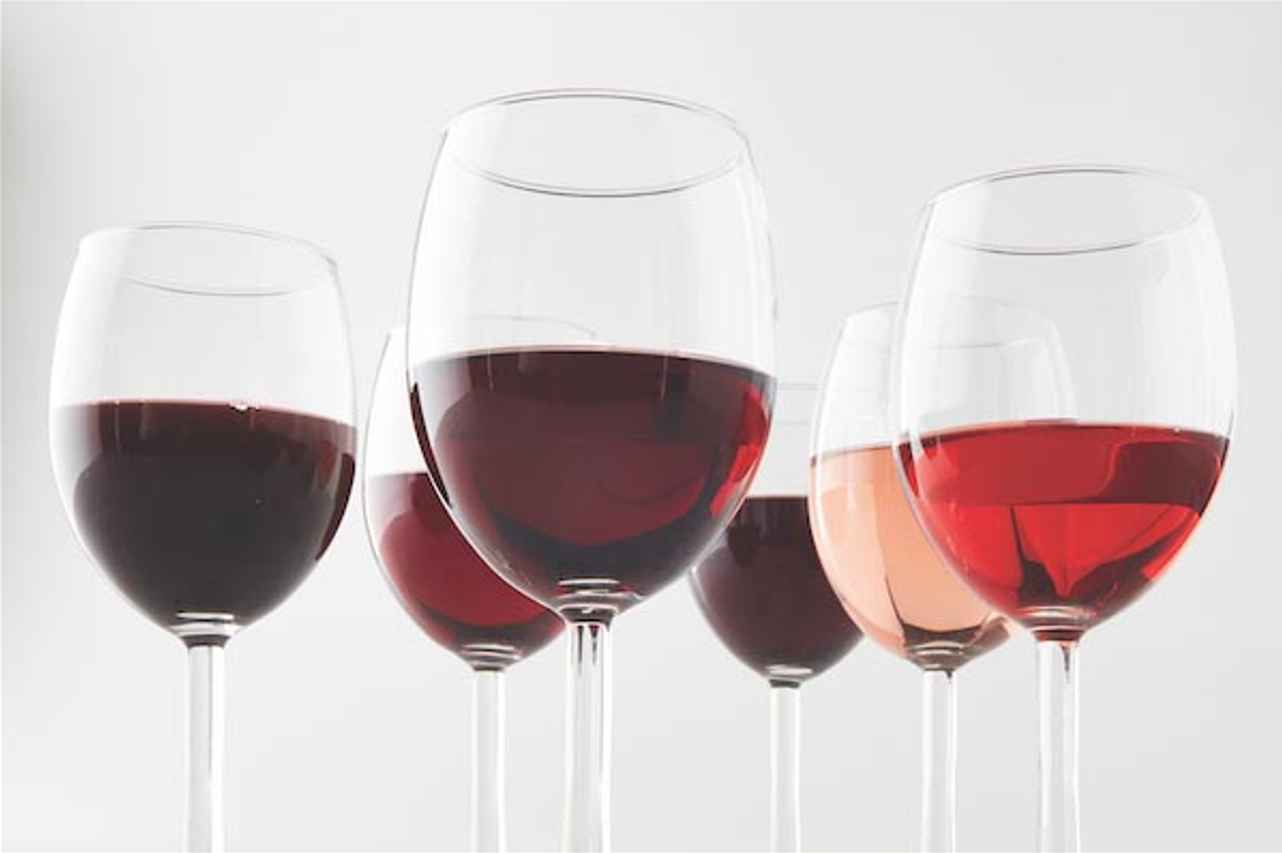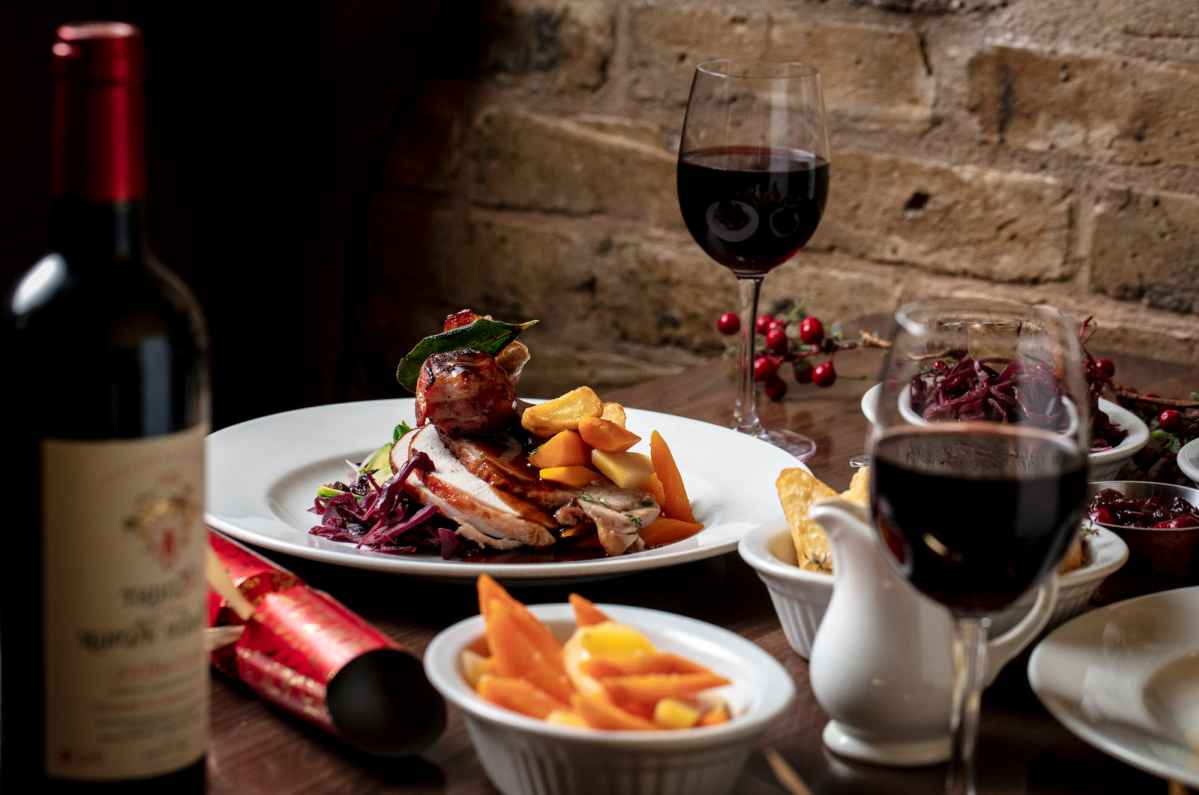As a newcomer to the wine industry, you may not fully understand the concept of medium-bodied wines, and that’s totally fine.
You may have heard of and enjoyed the smooth, thin taste of light-bodied wines, as well as the dense, rich taste of heavy-bodied wines, but medium-bodied ones? You can’t seem to place them.
If this is you, don’t worry! We will fully explore the question, “What is a medium-bodied red wine?” and teach you how to incorporate them into your meals. Shall we?
What is a Medium-Bodied Red Wine?
The concept of this wine is simple: it’s a beautiful balance between the light and heavy extremes. This category of red wines has balanced acidity, tannins, and alcohol levels. Such wines have more presence in your mouth than light-bodied red wines but are less dense than their heavy-bodied counterparts.
The body of the wine distinguishes each category, and no, it has nothing to do with the shape of the bottle. It simply refers to the mouthfeel, density, and weight of the wine.
If your wine feels dense, rich, and incredibly flavorful, it’s heavy-bodied. But if it feels subtle, delicate, and smooth, it’s light-bodied. Medium-bodied wines strike the perfect balance between both.
Here’s an excellent video that explains this thoroughly: What is Wine “Body”? Understanding Mouthfeel: Light Body, Medium Body, Full Bodied Wine.
While they may not be very acidic or peppery, they make up for that with dominant fruity or floral flavors and strong aromas: berry, cherry, pomegranate, plum, violet, and rose.
Let’s explore the components of medium-bodied wines, shall we?
How to Identify Medium-Bodied Red Wines?
Here are unique characteristics of medium-bodied red wines that can help you identify them anytime:
Alcohol Content
The first way to know whether a wine is medium-bodied is to look for the alcohol content. Medium-bodied wines typically have between 12.5 – 13.5% alcohol content. Anything higher than 13.5% is heavy-bodied, while anything less than 12.5% is generally considered light-bodied.
Tannin Levels
Medium-bodied wines have moderate tannin levels. For those who don’t know what tannins are, they are found in grape skin, seeds, or stems, and they give the wine structure, texture, and taste.
For instance, tannin contributes to the wine’s ‘mouthfeel’. It’s also responsible for certain sensations you feel after taking red wine. The higher the tannin level, the drier your mouth will feel after taking it.
Color
Medium-bodied wines have darker red hues than light-bodied red wines but are not as dark as their heavy-bodied counterparts. In most cases, the color stems from the type of grape used to make the wine. For instance, medium-bodied wines are not as dark as Shiraz but are not as light as Grignolino. They strike the perfect color balance.
Taste Profile
As mentioned, medium-bodied red wines have moderate acidity, and this adds a distinct freshness to the wine. The moderate acidity allows the flavors to shine through, and the common flavors used for such wines are often cherry, blueberries, raspberries, or plums.
Also, these wine flavors are not as delicate as light-bodied red wines and not as intense as heavy-bodied wines.
Top Medium-Bodied Red Wines You Should Know
Here are the top medium-bodied red wines you should try. Remember, some styles of red wines might fall into this category because of their alcohol content, but the wines listed here are generally medium-bodied.
- Frappato: This red wine grape variety originated from Sicily, Italy. Most Frappato red wines have an alcohol level of around 12.5% with moderate tannins and acidity. I love this wine because its well-defined grapey aroma makes it stand out.
- Dornfelder: Dornfelder came at a time in Germany when most of their wines were light-bodied, and people were actively looking for more depth. This wine has an alcohol level of around 13.5%, with moderate tannins, balanced acidity, and a fairly rich texture.
- Sangiovese: Originating from Italy, this grape variety is no stranger to wine enthusiasts. It has an alcohol level between 13 – 13.5%. Unlike its many counterparts, Sangiovese wine doesn’t necessarily have a very strong aroma but compensates for that with robust earthy flavors.
- Zweigelt: This red grape variety originates from Austria, with an alcohol level between 11.5 – 13.5%. Again, it has moderate acidity that the intense raspberry and cherry flavors compensate for. The unique thing about Zweigelt is that you can find them as varietals or as blends with other wines.
- Mencia: If you’re looking for a rich, aromatic wine like Pinot Noir but medium-bodied, look no further! Mencia tops the list. It has an alcohol level between 12.5 – 13.5%. I love this wine because it has moderate acidity and tannin, but a vibrant flavor blend and flowery aroma- strawberry, raspberry, pomegranate, black currants, you name it!
How Do You Store a Medium-Bodied Wine?
The same rules for storing most wines apply here. Let’s have a look:
- Temperature: Have you ever wondered why people use their basements to store wines? The temperature is always cool and stable there, around 55 – 60F! Always look for a place with a cool and stable temperature to keep your medium-bodied wine, or else temperature fluctuations can mess it up.
- Humidity: You should store your medium-bodied wines in preferably humid places because low humidity levels can dry the cork and allow oxygen to seep in. I know it may be quite challenging to control humidity levels but you have to try.
- Light: Your medium-bodied wines should be protected from light, especially UV light because it can degrade their organic material and alter the wine’s composition. That’s why basements are great for storing wine.
- Position: Keep your medium-bodied wine horizontally to keep the cork moist.
- Vibration: Don’t store your wine in a place with consistent vibrations, like close to freezers and ACs. Why? These vibrations destroy the wine’s integrity and distort its aging process.
Food Pairings With Medium-Bodied Red Wines
From my experience, three factors determine the best foods to pair with medium-bodied red wines: flavor intensity, weight, and taste sensations.
Wines have different flavor intensities. The flavor intensity of a light-bodied wine will be dissimilar to that of a medium-bodied one. So, the trick is to pair your wine with food that has the same flavor intensity.
Also, you must balance the wine’s weight with the food’s weight to create a balance so that none overwhelms the other. For instance, you can pair Sangiovese with roast chicken. Finally, choose a food that blends with whatever taste sensation you feel, whether acidic, sweet, salty, or umami. If the taste isn’t the same, one will dilute the other.
In my opinion, nothing beats making roasts and pasta and pairing them with a good glass of medium-bodied red wine. The blend is heavenly and I always forget my diet.
Final Words
What is a medium-bodied red wine?” I’m pretty sure you can answer this question by now. I love such wines because it provides that complexity and depth I need and my mouth doesn’t feel heavy.
So, if someone walks up to you today and asks you to talk about medium-bodied wines, what should you remember? Everything is moderate with this wine: alcohol levels, taste, tannin levels, and in most cases, flavor.





